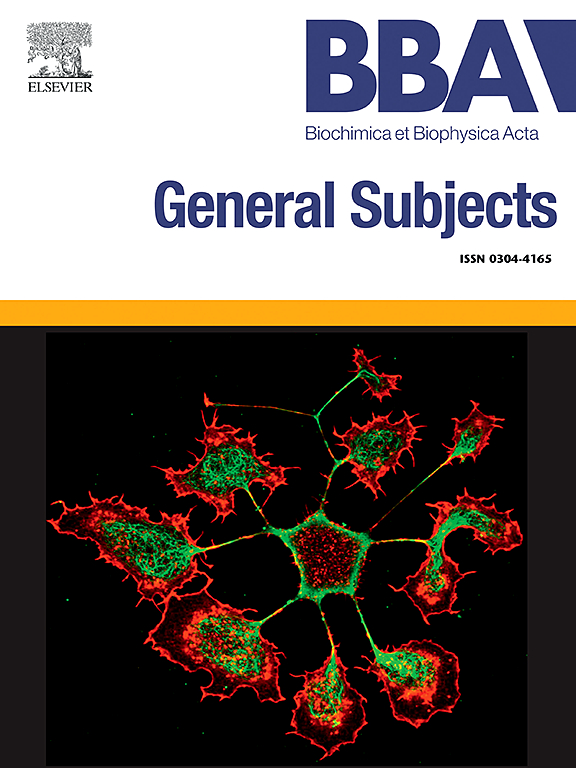High glucose induces FABP3-mediated membrane rigidity via downregulation of SIRT1
IF 2.2
3区 生物学
Q3 BIOCHEMISTRY & MOLECULAR BIOLOGY
Biochimica et biophysica acta. General subjects
Pub Date : 2025-04-01
DOI:10.1016/j.bbagen.2025.130802
引用次数: 0
Abstract
High glucose induces an atypical lipid composition in skeletal muscle, leading to loss of muscle mass and strength. However, the mechanisms underlying this glucose toxicity are not fully understood. Analysis of genes associated with a phenotype using the BXD phenome resource revealed that increased Fabp3 expression in skeletal muscle correlated with hyperglycemia. FABP3 expression was also increased in hyperglycemic mouse models such as leptin-deficient ob/ob, Ins2Akita, and high-fat fed mice, as well as in aged mice. In cultured myotubes, high glucose elevated the mRNA and protein levels of FABP3, which contributes to decreased membrane fluidity, along with other mechanisms. FABP3 expression was dependent on the NAD+/NADH ratio and SIRT1 activity, suggesting a mechanism by which FABP3 is upregulated in hyperglycemic conditions. Our findings propose that FABP3 links hyperglycemia to atypical membrane physicochemical properties, which may weaken contractile and metabolic function, particularly in skeletal muscle.

高糖通过下调SIRT1诱导fabp3介导的膜刚性
高葡萄糖诱导骨骼肌的非典型脂质组成,导致肌肉质量和力量的损失。然而,这种葡萄糖毒性的机制尚不完全清楚。利用BXD表型资源分析与表型相关的基因发现,骨骼肌中Fabp3表达的增加与高血糖相关。在高血糖小鼠模型(如瘦素缺乏的ob/ob、Ins2Akita和高脂肪喂养小鼠)以及老年小鼠中,FABP3的表达也增加。在培养的肌管中,高葡萄糖升高了FABP3的mRNA和蛋白水平,这有助于降低膜流动性,以及其他机制。FABP3的表达依赖于NAD+/NADH比值和SIRT1活性,提示FABP3在高血糖状态下上调的机制。我们的研究结果表明,FABP3将高血糖与非典型的膜物理化学特性联系起来,这可能会削弱收缩和代谢功能,特别是在骨骼肌中。
本文章由计算机程序翻译,如有差异,请以英文原文为准。
求助全文
约1分钟内获得全文
求助全文
来源期刊

Biochimica et biophysica acta. General subjects
生物-生化与分子生物学
CiteScore
6.40
自引率
0.00%
发文量
139
审稿时长
30 days
期刊介绍:
BBA General Subjects accepts for submission either original, hypothesis-driven studies or reviews covering subjects in biochemistry and biophysics that are considered to have general interest for a wide audience. Manuscripts with interdisciplinary approaches are especially encouraged.
 求助内容:
求助内容: 应助结果提醒方式:
应助结果提醒方式:


